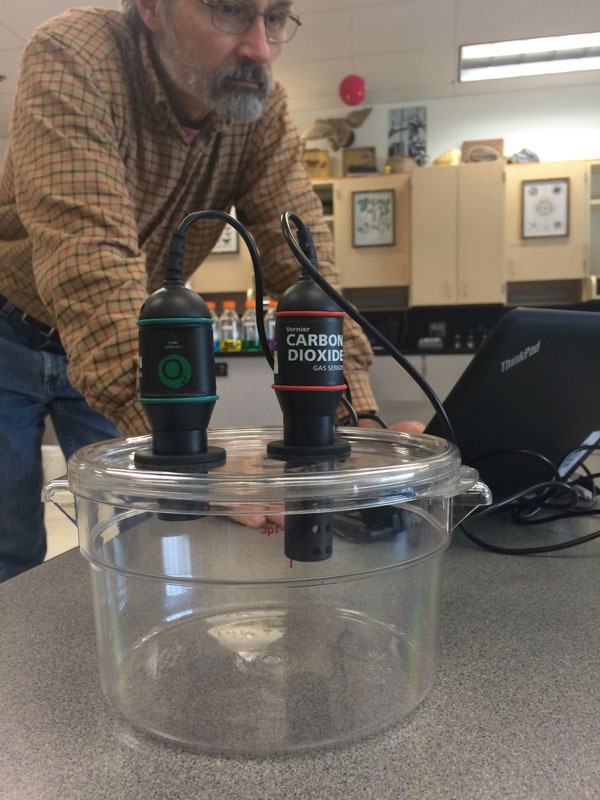The South Whidbey Schools Foundation is at a crossroad.
On one end is the path they’ve traveled since the non-profit was founded in 1995, which has been acquiring donations from community members, businesses, and fundraisers in the hopes of creating innovative learning opportunities outside the regular classroom curriculum.
On the other side is a much grander goal, one that board members hope will help the school district achieve teachers’ biggest dreams for their classrooms.
For now, they’ll have to work with the former.
The foundation hopes to divvy up $25,000 in classroom grants to teachers at all four of the district’s campuses. All combined, the teachers requested $40,000, but due to the foundation’s limited resources for garnering funds, they won’t be able to address all of the requests.
“We are at a point where we really want to start to get big money,” said Jean Shaw, a founding member of the foundation and community liaison. “What we wish we could get is a paid grant writer. Because we could be funding $100,000, that’s what we would love to do: Big stuff.”
Teachers submitted proposals during the designated grant cycle in the hopes of seeing their endeavors come to light. The applications are evaluated by the foundation’s grant committee, and are awarded based on consistency with the foundation’s goals and funding strategies, according to the non-profit’s website. The number of students served is also a determining factor, according to grant documents.
Costlier items such as the $2,060 seventh-grade outdoor learning expedition requested by Langley Middle School’s Mary Bakeman and a $3,400 sound recording studio requested by South Whidbey High School’s Jeff Greene, are among the 30 grant requests by teachers.
Because normal school funding only provides for the daily operation of the schools — building maintenance, salaries, curriculum — the foundation fills in where the district cannot.
The foundation is run by former or current teachers, administrators, and parents, as well as residents with no direct ties to the schools who hope their efforts will make a difference in the education system.
“We love the schools. Most of us, in some ways, are connected to the schools,” Shaw said. “Whether it’s having kids there or being teachers, we’re all really invested.”
Shaw said the foundation members hope a grant writer in the future will find new avenues of funding from big names, such as Boeing or The Gates Foundation.
“One of our goals is to bring more corporate sponsors and create a sustainable pot of cash,” said Foundation President Chris Gibson. “That’s kind of a pie-in-the-sky dream right now. We want to find steady sources of income or tap in to those areas that are receptive areas.”
According to Gibson’s estimate, the foundation typically receives anywhere from $1,500 to $3,500 per Dine Out Event, where restaurants donate a portion of their revenue to the foundation in the fall and winter.
Greg Ballog, a biology teacher at South Whidbey High School, hopes his and Langley Middle School teacher Susan Milan’s combined request of $2,628 to purchase lab equipment will help students learn more about the carbon cycle.
“I’ll be pleasantly surprised and happy if it comes through,” Ballog said.
The lab equipment would be portable computer probes to measure atmospheric carbon as a way of engaging the classroom in ways his lectures cannot.
“Probably more than anything it helps us expand the curriculum,” Ballog said. “The things we get that are funded regularly just maintain what we’re doing. Outside funds like the foundation help us bring in new things, things we wouldn’t normally get.”
The potential lab equipment would create a collaborative classroom experience between the middle school and high school, said Ballog, where students would travel to the other campuses to conduct experiments.
Other potential projects requested include purchasing tools, equipment and team shirts for the South Whidbey Underwater Robotics Class, purchasing science equipment to enhance garden and marina studies, purchasing scientific field equipment for understanding watershed ecology, and hiring an artist in residence for 58 hours of expressionism and principles of design-action art.
“The teachers have been coming up with the best ideas,” Shaw said. “The state gives enough base stuff, but not the wonderful stuff (teachers) come up with.”
The South Whidbey Schools Foundation is holding a meeting today to determine which projects will be funded and which projects will be put on hold until further funding is acquired.
Interested donors can make an online donation via PayPal on the foundation’s website, http://southwhidbeyschoolsfoun
dation.org.



